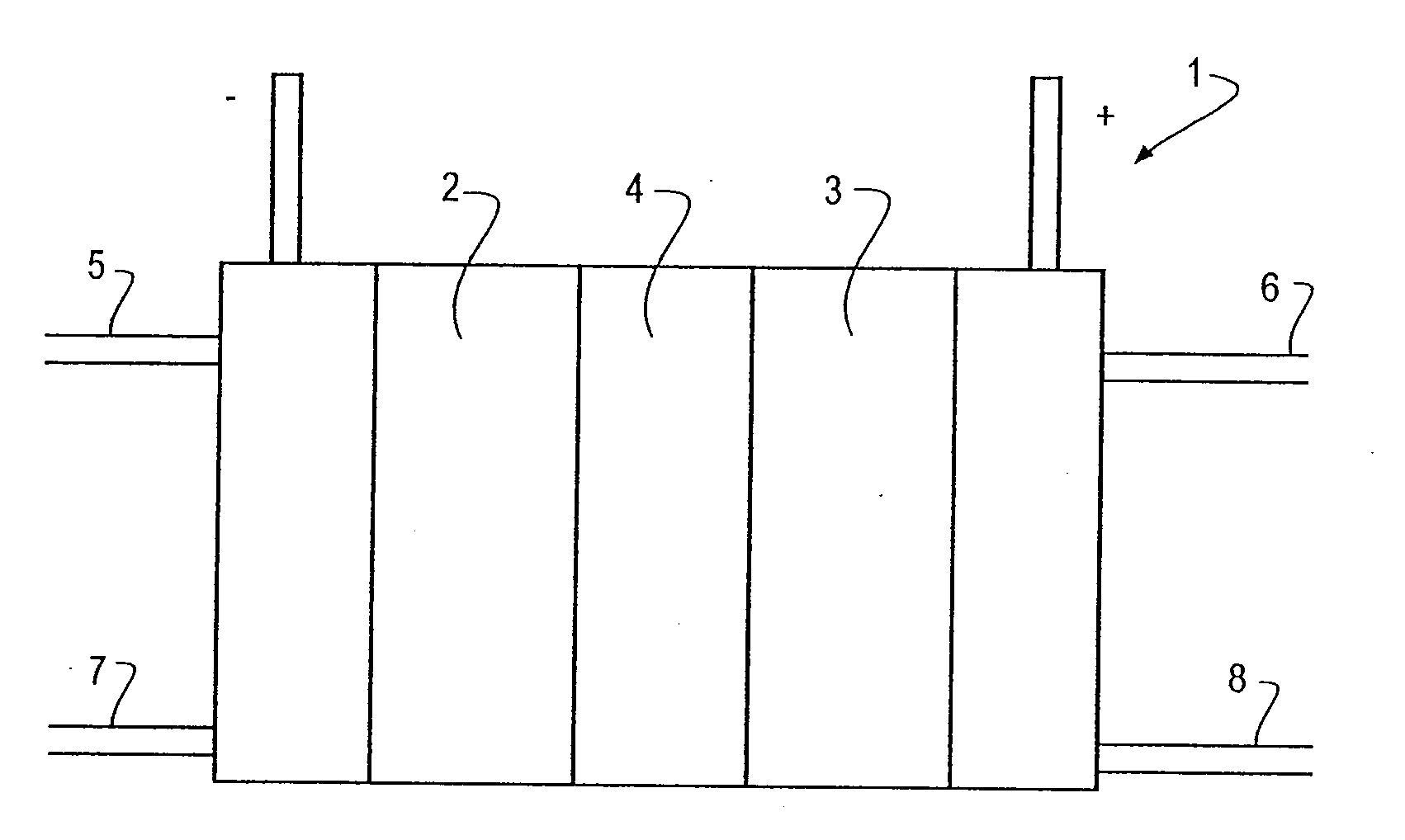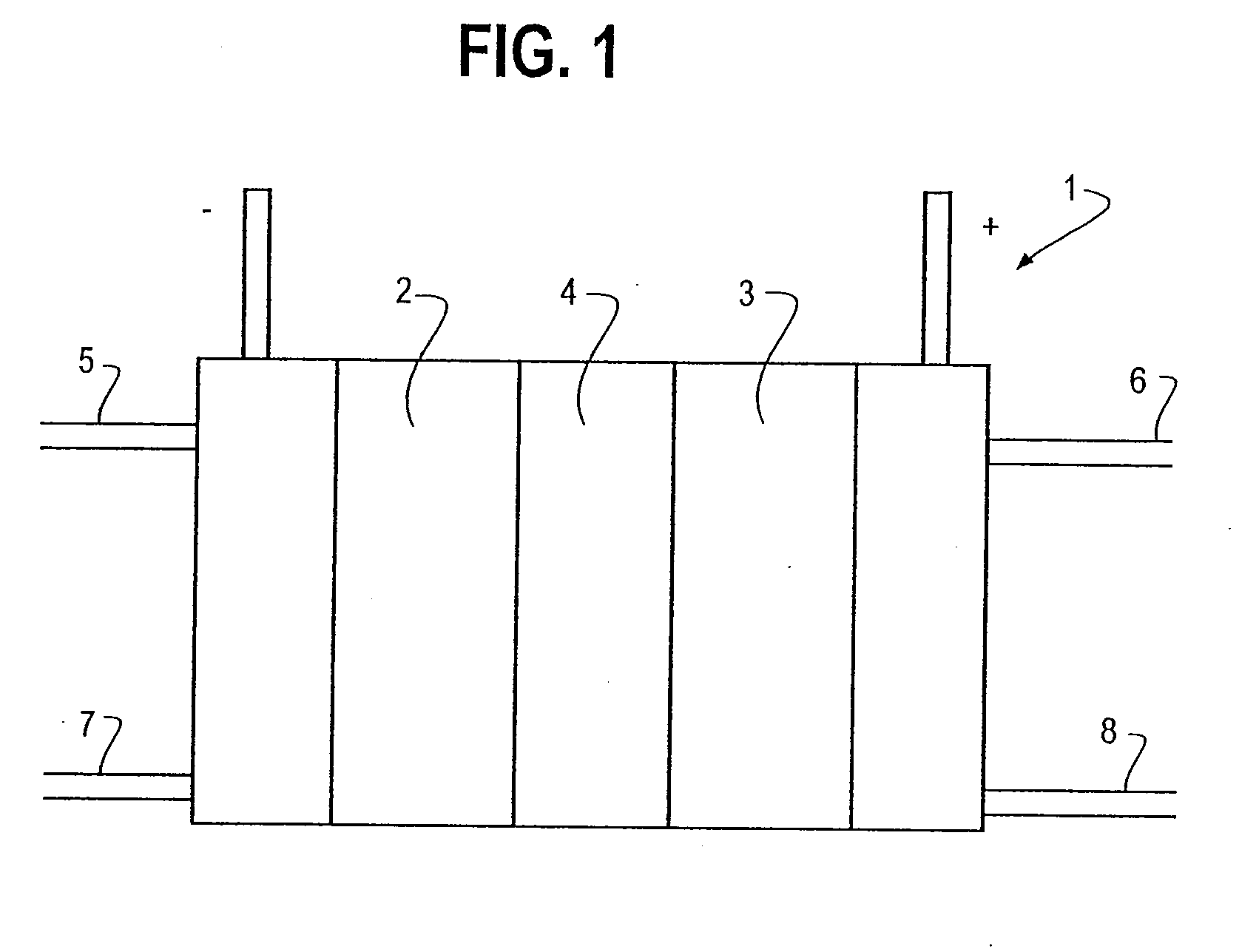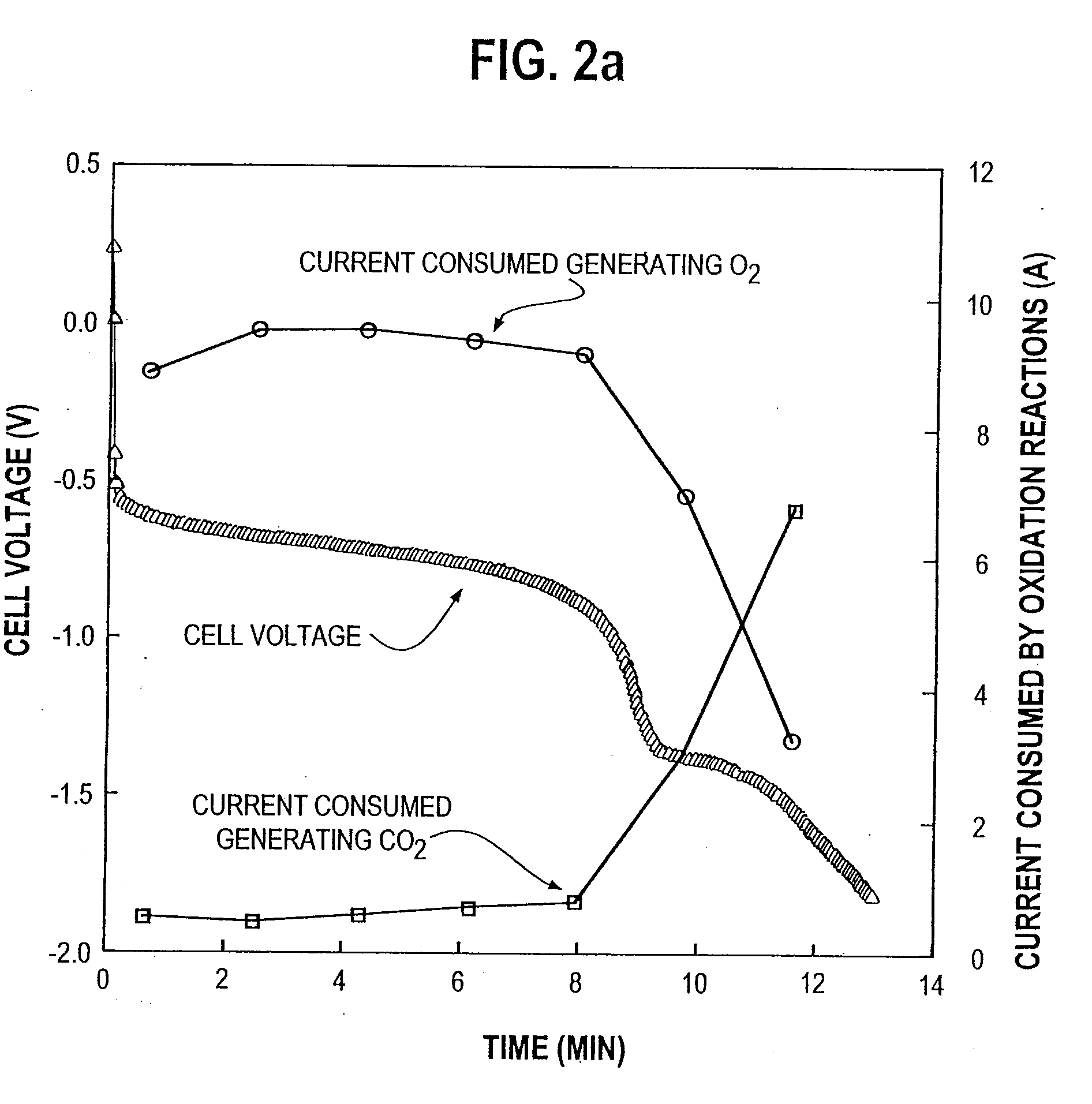Supported catalysts for the anode of a voltage reversal tolerant fuel cell
a fuel cell and voltage reversal technology, applied in secondary cells, electrochemical generators, cell components, etc., can solve the problems of increasing the rate of oxidation of anode components, degrading certain components of the affected fuel cell, and affecting the efficiency of the fuel cell, so as to increase the loading of catalyst and improve the corrosion resistance
- Summary
- Abstract
- Description
- Claims
- Application Information
AI Technical Summary
Benefits of technology
Problems solved by technology
Method used
Image
Examples
example 1
[0059]A series of membrane electrode assemblies (MEAs) was constructed for laboratory testing using test electrodes with carbon black supported platinum catalysts having varied platinum loading on the supports. The series consisted of cells whose test electrodes had catalysts with platinum loading of 0, 10, 20, and 40% of the total weight on Vulcan XC72R grade furnace black (from Cabot Carbon Ltd., South Wirral, U.K.). In preparing the test electrodes, a catalyst sample was applied as a layer in the form of an aqueous ink on a porous carbon substrate using a screen printing method. The aqueous inks comprised catalyst sample, ion conducting ionomer, and a binder. With the exception of the 0% platinum loaded sample, each test electrode was prepared with the same weight of platinum per unit area. Thus, test electrodes with lower platinum loading on the supports contained a greater weight of carbon black support. Further, test electrodes with lower platinum loading on the supports also ...
example 2
[0066]A series of solid polymer fuel cells was constructed using MEAs similar to those in Example 1 above. However, the test electrodes were now the anodes and had catalysts with platinum loading of 0, 10, 20, and 40% of the total weight on Vulcan XC72R grade furnace black. The opposing electrodes, that is, the cathodes, employed platinum black (unsupported) catalyst applied to a porous carbon substrate. Each cell was electrically conditioned by operating it normally at a current density of about 0.5 A / cm2 and a temperature of approximately 75° C. Humidified hydrogen was used as fuel and humidified air as the oxidant, both at 30 psig pressure. The stoichiometry of the reactants (that is, the ratio of reactant supplied to reactant consumed in the generation of electricity) was 1.5 and 2 for the hydrogen and oxygen reactants respectively. After conditioning, the output cell voltage as a function of current density (polarization data) was determined on the cells with 20% and 40% platin...
example 3
[0070]Another series of solid polymer fuel cells was constructed using different carbon supports for the anode catalyst as indicated below. The catalyst samples prepared were:[0071]S—Pt / Ru alloy and RuO2 supported on Shawinigan acetylene black (from Chevron Chemical Company, Texas, USA), 16% Pt / 8% Ru (as alloy) / 20% Ru (as RuO2) by weight.[0072]V—Pt / Ru alloy and RuO2 supported on Vulcan XC72R grade furnace black (from Cabot Carbon Ltd., South Wirral, UK), 16% Pt / 8% Ru (as alloy) / 20% Ru (as RuO2) by weight.[0073]GV—Pt / Ru alloy and RuO2 supported on graphitized Vulcan XC72R grade furnace black (graphitized at temperatures above 2500° C.), 16% Pt / 8% Ru (as alloy) / 20% Ru (as RuO2) by weight.
[0074]The order of corrosion resistance of the carbon supports is Vulcan XC72R (graphitized) is greater than Shawinigan, which is greater than Vulcan XC72R. This order of corrosion resistance is related to the graphitic nature of the carbon supports. The more graphitic the support, the more corrosion ...
PUM
| Property | Measurement | Unit |
|---|---|---|
| output voltage | aaaaa | aaaaa |
| voltage | aaaaa | aaaaa |
| perimeter | aaaaa | aaaaa |
Abstract
Description
Claims
Application Information
 Login to View More
Login to View More - R&D
- Intellectual Property
- Life Sciences
- Materials
- Tech Scout
- Unparalleled Data Quality
- Higher Quality Content
- 60% Fewer Hallucinations
Browse by: Latest US Patents, China's latest patents, Technical Efficacy Thesaurus, Application Domain, Technology Topic, Popular Technical Reports.
© 2025 PatSnap. All rights reserved.Legal|Privacy policy|Modern Slavery Act Transparency Statement|Sitemap|About US| Contact US: help@patsnap.com



